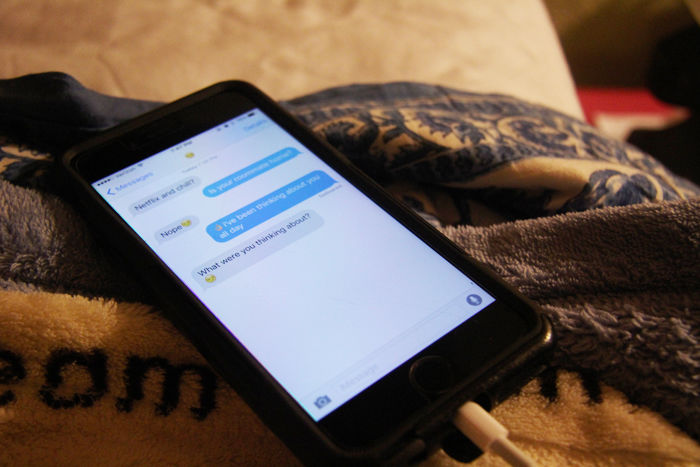Sexting: 21st century sex
A 2014 survey from McAfee Intel Security found that 54 percent of respondents send or receive intimate content on their phones.
October 28, 2016
Sexting: A concept that would only exist in today’s world. A world that can communicate through text messages, Facebook Messenger apps, direct messages on Twitter, and Snapchat. Personally, I have done it, but it’s hard to decide if it is a good thing or a bad thing. After all, sex isn’t really discussed in the open, so why would the view of sexting be any different?
According to google.com, sexting is defined as to “send (someone) sexually explicit photographs or messages via cell phone.” Google also shows an increase use of the word right around 2010, so people must be doing it, right?
In 2014, McAfee Intel Security released its Love, Relationships & Technology survey which “examined how more than 1,500 consumers are sharing and storing intimate data on their mobile devices, especially with current or former significant others.”
The survey found that 98 percent of the respondents use their phones to take pictures while “54 percent send or receive intimate content including video, photos, emails and messages.” This now poses a modern issue, the risk of having that risqué content leaked or posted online.
Let’s say a relationship ends in bad terms and during that relationship, sexts were sent between both parties. Those sexts can now be posted online and used to humiliate the other person. Even though sex has been going on in some shape or form since forever, people now have “receipts” of people talking about their foot fetishes or their naughty fantasies.
Another issue that sexting might impose is the dilution of sex. For most people, sex is such an intimate and personal interaction and by sexting, it removes that sense of closeness and vulnerability that people crave.
Sexting makes sense if a couple is in a long-distance relationship, but if you see the person you’re sexting a few times a week, I think all that dirty talk should be saved for when a couple is actually face to face.
The final issue I see with sexting is unsolicited photos. I know there are people out there who have received unwanted photos and here’s a way to prevent that: ask before you send them. It’s just like asking someone to dance at a party or asking someone on a date and they say no, just take the “L” and go find someone that does want it.
There are plenty of fish in the sea, some who want your nudes and others who don’t. By asking someone if they want a nude photo, it saves you from rejection, it helps keep your privates from falling into the wrong hands and exposing yourself, and most importantly, it keeps people who don’t want to see your John Handcock from seeing it.
Sexting, a practice that originated in the 21st century, should be treated like sex. There are going to be risks, there are ways you can protect yourself, and there is a certain etiquette that should be followed.
So go ahead, people. Practice safe sexting, send that “Hey, u up?” text at midnight, ask that person you’ve been talking to “What dat mouf do?”, slide into those DM’s, and text the person you want to hit up, “What would you be doing if I was there?”





















